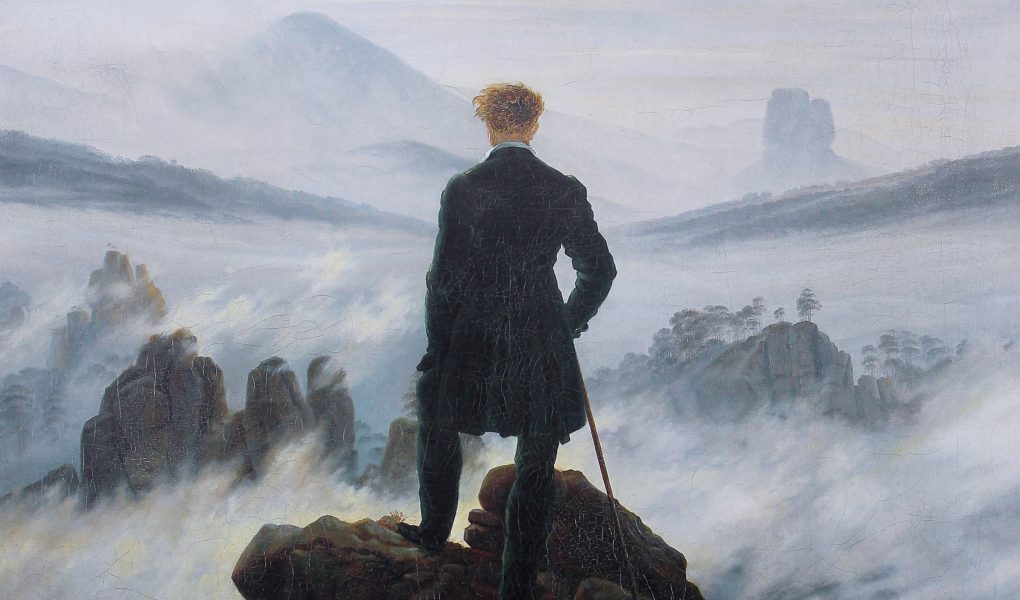This essay was written by Gabbie Schwartz, a Humanities Center student fellow and the BYU Humanities Center Intern.
I first encountered the aesthetic theories of the sublime and the beautiful in English 292, a course that focused on British Literary History from 1789 onward. Most will be familiar with Edmund Burke’s seminal work, A Philosophical Enquiry into the Origin of Our Ideas of the Sublime and Beautiful—a mouthful of a title but an accurate one. It was this treatise I read excerpts from, becoming familiar with Burke’s rough sketches of the sublime and the beautiful in order to understand their unique qualities and differences.
According to Burke, the beautiful seemed to refer to something smaller in scope, delicate, or pleasing, whereas the sublime captured our feelings of more powerful sensations. The sublime was vast and rugged, an awareness of our own mortality when faced with grandiosity or terror. Interestingly, both the beautiful and the sublime are captured quite well in our experiences with nature. It can be the difference between the first flower buds on a spring day and the near overwhelming power of a distant avalanche in winter. Alternatively, winter has its own share of beauty found in the striking way light lands on crystalline snow while spring has its own share of sublimity found in rushing rapids and thunderous waterfalls.
Both theories enriched my vocabulary, nuancing my aesthetic experiences. Such nuance became especially handy during the summer of 2023, but not in the way most would expect.
Over the spring and summer terms, I lived in Grasmere, UK as an intern at the literary heritage site, Wordsworth Grasmere. There, I had access to an incredible literary archive of British Romanticists (especially William and Dorothy Wordsworth). Not to mention, Dove Cottage, the home of the Wordsworths while they wrote some of their most famed poetry and prose, was a mere two-minute walk from where I slept.
There is, of course, a great deal to say about these experiences, but I was not confined to my workplace and living quarters. I spent a great deal of time wandering Grasmere itself. Much of it has been turned into a tourist destination attracting outdoor enthusiasts, but there are still many locals that call Grasmere home. I interacted with many of them as I attended an occasional Anglican service at their local parish church, St. Oswald’s. The building has a long history, stretching back to the 14th century, a history it has preserved through its observation of many traditions.
My friend and fellow BYU intern, who befriends strangers as naturally as breathing, heard through her growing list of Grasmerian friends that St. Oswald’s would be hosting an evensong, the psalms performed by Queen’s College, Oxford. The evensong would punctuate Rushbearing, a traditional festival wherein fresh rushes are spread across the floors of the parish church. The festival springs up from old English practices, when parish churches had earthen floors as opposed to stone. Back then, the rushes were used as renewable flooring, carried in by a procession of “rushmaidens.” These were typically young girls dressed in green smocks and hats wreathed with daisy chains.
Somehow, we found ourselves right in the thick of the festivities—organizing rushes into piles, binding rushes around symbolic decorations, preparing butterfly catchers made of rushes, and witnessing as the fresh rushes were laid across the stone in a mat of woven green amongst the benches, before the stained-glass, and in front of the altar.
Evensong took place there, the range of melodies and Latin and chanting hanging heavy in the air with the earthen scent of England rain, of deep forests in a spring just barely waking. I hope I never forget the sound of the organ weaving with the choir’s voices and the way it reverberated throughout the stone and high gothic arches.
I’d categorize most of my encounters with divinity and God as beautiful, but beautiful is not the word I would use to describe this experience. Haunting was the word that initially and immediately came to mind, but that too could not fully capture it. It was certainly eerie but welcome. Intense but soothing. I was made, in that moment, to feel as though I worshipped a being more powerful than I could imagine. This was very different from sacrament meetings at home singing “I am a Child of God.” Peace, happiness, comfort, those sorts of lighter sensations are what I had previously associated most often with the divine. But grandiosity and the distinct impression of overwhelming and near incomprehensible power—that was something new.
My encounter teetered on the sublime, unlocking a new vein of religious experience. Although faint, at first, I later recognized it with full force as the sensation continued, able to fit a word—a deliciously specific and articulate word—to the experience. What power words and ideas have that such a transformative experience can be contained and captured without limiting it or cheapening it. I do not know where else I will encounter the sublime. I only know that the ideas of those who existed long before me, passed on to me, have provided me with the capacity to recognize the sublime when I am brought before it.






